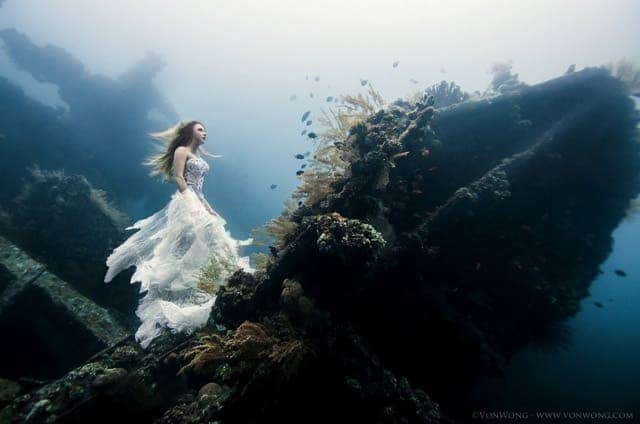ven if you’re not necessarily a big fan of photography, Benjamin Von Wong, a very popular photographer from Montreal, managed to take a really difficult underwater photoshoot with amazing results, under unfriendly, specific conditions which are far from what most photographers would even dare to approach.
The crew who helped him realize such an amazing project contains experienced divers, underwater photographs as well models who would agree to be photographed under water, not to mention the equipment from the photo cameras to the models’ clothes.
The photoshoot was taken 25 meters under the sea in a shipwreck off the coast of Bali and the photos are exceptionally impressive even before you get to know and understand the complexity of the project or the major difficulties the team went through.
‘Teamwork is a word that truly begins to mean something when you’re shooting 25 meters underwater and your model tied to a 50 year old shipwreck in the middle of Bali where the slightest miscalculation could spell disaster’, declared the photographer on his own site, here.
The models, who were experienced free divers, were photographed on-site as well as around the shipwreck with long, white flowing dresses reminding of mermaids and mystical, mythological lands of knowledge and free associations.

There was no photoshoping of the photographs until post-production, and some of he other problems of the idea included either training models to learn freediving or choosing from a smaller range of the ones who already knew, a designer willing to part with the clothing, specially trained safety divers to navigate around and make sure there were no problems during the photoshoot, along with technical issues such as the limited lighting gear.






